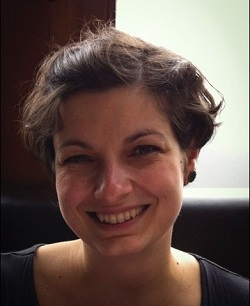
Dora Vargha is Lecturer in Medical Humanities at the University of Exeter, United Kingdom. She was a Consortium Research Fellow in 2015-16.
Through the story of the live poliovirus vaccines spanning four continents, this research aims to understand the pre-history of contemporary disease eradication programs. More specifically, I focus on polio vaccine experiments and their evaluation, epidemiological data collection and vaccination policies. The temporal framework is marked by transnational debates that took place on the pages of medical journals and at international conferences in the 1950s and the launch of the Global Polio Eradication Initiative in 1988. In this work, I provide a historical analysis of how polio prevention became a global project and what the roles of international agencies, pharmaceutical companies, individual researchers and the experience of research subjects were in the process. Thus, in part this research asks how one particular vaccine becomes the technology of choice in the formative years of international health agencies and parallel eradication campaigns, and it also compares how certain trials and public health campaigns played out on the ground with how they became represented as models in shaping disease eradication.
In detail, this research addresses a lacuna in the history of global drug development and testing, and explicates the role of international organizations and pharmaceutical companies in orchestrating experiments and trials. The project explores the much-neglected era between the first instances of internationally coordinated vaccine trial in the interwar era – as narrated by historian Clifford Rosenberg – and the widespread pharmaceutical testing in developing countries some fifty years later, as demonstrated by anthropologist Adriana Petryna. I argue that the 1950s and 1960s saw a crucial turning point in the globalization of drug development, with polio vaccine testing, as the first globalized project in the 20th century. The most intensive decade of polio research coincided with the formative years of the WHO, which acted not only as a passive site for political gamesmanship, but as an active participant in shaping research.
My research also contributes significantly to the trans-national historiography of polio. While today polio eradication is a high-priority global public health project, the disease’s history has been predominantly written from within one national tradition. On rare occasions, when the history of polio is analyzed in a global context live poliovirus vaccine development, testing and early implementation that became the basis for the Global Polio Eradication Initiative, are largely ignored. In this project, I aspire to provide a much-needed historical analysis of how polio prevention became a global project and what the role of international agencies, pharmaceutical companies, individual researchers and research subjects were in the process.
In order to understand the role of professional networks, rivalries, and the geopolitics of vaccine development, as a Consortium Research Fellow I conducted research on vaccine trials that significantly shaped debates and decisions on live poliovirus vaccines. I visited three archives and gave a paper at the Consortium’s Working Group on Medicine and Health.
At the Archives of Yale University Library, the papers of John R. Paul and Dorothy Horstmann shed light on the scientific networks and their role in identifying vaccine-testing sites and on the politics of vaccine evaluations. A surprising find was Horstmann’s personal correspondence with Herdis von Magnus, key polio expert in Denmark. The women scientists’ regular exchanges that spanned from laboratory experiences, virus specimens through items of clothing, discussions on the latest fashion, and women’s issues over three decades, shed light on the manifold ways in which researchers networks operated and how influential women fared in the global knowledge production of polio vaccine research.
The Archives of the American Philosophical Society’s was a wonderful resource for locating the most elusive player in live polio vaccine development, H.R. Cox. Through extensive correspondence on job placement possibilities, grant applications and prize committees in the papers of Peter Olitsky, Simon Flexner and Thomas Rivers I was able to get a sense of Cox’s and Albert Sabin’s professional development and the difficulties in navigating the relatively small world of virologists in the mid-twentieth century. The papers also provided a somewhat comforting, but also frustrating realization that being on the academic job market was never an easy experience.
The Library of the University of Pennsylvania revealed helpful material on Hilary Koprowski’s work, including a recording of an oral history interview. Apart from archival materials, my stay in Philadelphia as a Research Fellow yielded invaluable personal contacts for future oral history interviews as well. With the wonderful help of Bonnie Clause I was able to map out potential new sources to follow up as I progress with my research.
Finally, my stay in the United States gave me an opportunity to present my research and receive feedback on new work. Upon the invitation of Paul Theerman, I presented a paper titled “After the End of Polio: Local and Global Consequences of Disease Elimination.” Daniel Wilson’s comments and the discussion of the working group opened new questions and perspectives for me to explore and contributed greatly to refining my arguments.
Overall, the Research Fellowship proved to be invaluable in developing my research and to prepare my first publications on global vaccine development and testing. It provided me with crucial archival sources, an inspiring intellectual environment, and a framework for new research that boosted this project in unparalleled ways.